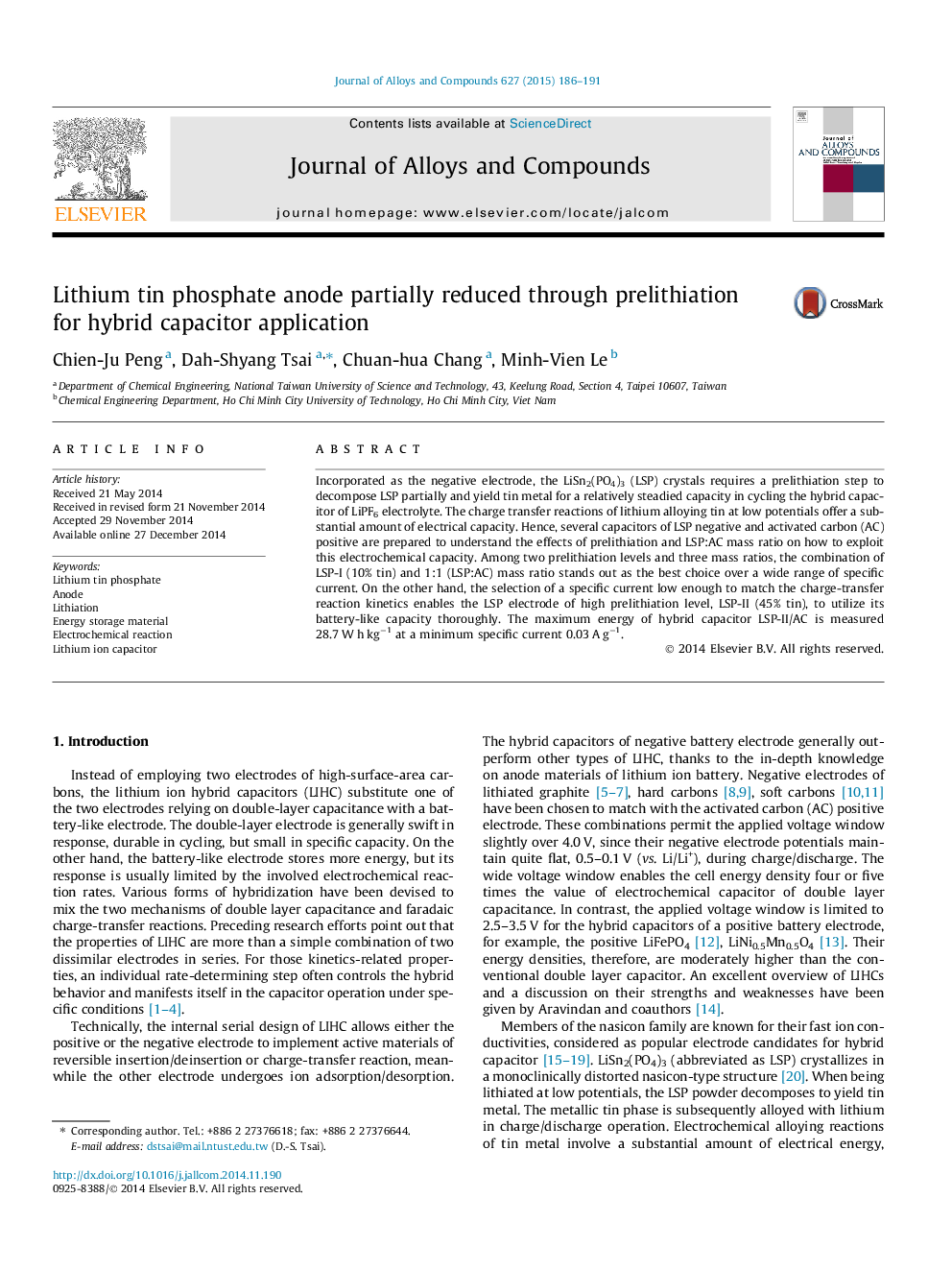| کد مقاله | کد نشریه | سال انتشار | مقاله انگلیسی | نسخه تمام متن |
|---|---|---|---|---|
| 1609996 | 1516266 | 2015 | 6 صفحه PDF | دانلود رایگان |
• LiSn2(PO4)3 LSP is prelithiated to yield tin and made steady its electrode capacity.
• Several hybrid capacitors are made with negative LSP and positive activated carbon AC.
• The effects of LSP prelithiation level and LSP:AC mass ratio are studied.
• The plus of metallic tin on capacity is realized only at low current densities.
• The LSP-I:AC ratio of 1:1 in mass is superior under most operation conditions.
Incorporated as the negative electrode, the LiSn2(PO4)3 (LSP) crystals requires a prelithiation step to decompose LSP partially and yield tin metal for a relatively steadied capacity in cycling the hybrid capacitor of LiPF6 electrolyte. The charge transfer reactions of lithium alloying tin at low potentials offer a substantial amount of electrical capacity. Hence, several capacitors of LSP negative and activated carbon (AC) positive are prepared to understand the effects of prelithiation and LSP:AC mass ratio on how to exploit this electrochemical capacity. Among two prelithiation levels and three mass ratios, the combination of LSP-I (10% tin) and 1:1 (LSP:AC) mass ratio stands out as the best choice over a wide range of specific current. On the other hand, the selection of a specific current low enough to match the charge-transfer reaction kinetics enables the LSP electrode of high prelithiation level, LSP-II (45% tin), to utilize its battery-like capacity thoroughly. The maximum energy of hybrid capacitor LSP-II/AC is measured 28.7 W h kg−1 at a minimum specific current 0.03 A g−1.
Journal: Journal of Alloys and Compounds - Volume 627, 5 April 2015, Pages 186–191
